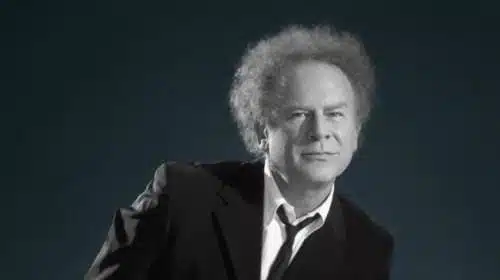
Let’s face it: Art Garfunkel is underestimated by practically everybody. It’s disturbingly common for people (critics included) to regard Simon and Garfunkel as essentially a Paul Simon solo vehicle. Perhaps the catalyst for these misconceptions is Simon himself, who relinquished the role of lead singer on only his drippiest compositions (“For Emily, Wherever I May Find Her”, “Bridge Over Troubled Water”, etc.) and otherwise relegated his partner to accessory vocal duties.
But here’s the thing — Garfunkel’s contributions to the group were significant, even if he wasn’t front-and-center most of the time, and surely the band’s best and most memorable recordings ARE those where both singers are emphasized equally, where the intended “main” melody and harmony are indistinguishable from each other. I mean, could you imagine “The Sound Of Silence” or “Mrs. Robinson” without Art? I mean, I guess I can, but they would suck compared to the existing recordings. Even Simon wouldn’t have been able to replicate the effect by doubling his vocals. Garfunkel is, in a traditional sense, a much better singer than Simon. Simon needed someone like Garfunkel to buttress his relatively frail voice. Art Garfunkel’s presence is something many people took for granted, and as solid as Paul Simon’s solo material (often) is, Simon and Garfunkel’s output has spoiled me into feeling like there’s something missing from all of it, and that something is incontrovertibly Art Garfunkel’s voice. So let’s hear it for him.
The Singer is a retrospective assembled by the singer personally, spanning his entire career, and it’s a little all-over-the-map. The fact that the record is sequenced in a manner impertinent to chronology even makes things more confusing, leaving us to ask what exactly is this? This record can’t accurately be described as a “greatest hits” collection, because many of Art’s inarguably greatest performances (“So Long Frank Lloyd Wright”, “Traveling Boy” and his rendition of Van Morrison’s “I Shall Sing”) are omitted from the track sequence. But it’s also by no means an odds-and-ends collection, either, as the majority of material that constitutes this compilation is available on other releases. So it’s safe to assume that this is a collection of tracks that Art himself considers are quintessential, and I’m not entirely in agreement with him.
While cuts “All I Know” (which appeared on Garfunkel’s solo debut Angel Clare), “I Only Have Eyes For You” and his version of “Disney Girls” rank among the vocalist’s finest hour, many of his selections are passable and some of them are regrettable — “Scissor Cut” and his interpretation of “When A Man Loves A Woman” have aged horribly and this reminder of their existence can only serve to sully Garfunkel’s legacy. And while Art Garfunkel is a technically flawless singer, he’s unemotional and slightly unbelievable, which is a defect several of his conspecifics exhibit. Art misses all of the vulnerable and disconsolate nuances in some songs’ lyrics, awkwardly singing lines like “and so you see I have come to doubt” with an inappropriate amount of confidence and impetus.
Garfunkel is a great (and perhaps even an underrated, at this point) vocalist, but undoubtedly his best moments were while he was a part of Simon and Garfunkel (and several of his solid solo efforts are curiously absent from this compilation, too). At 28 tracks, The Singer batting average isn’t too spectacular, though the gorgeous “Disney Girls” and of course the classic “Bridge Over Troubled Water” are (almost) enough to make the inanity all worthwhile.

